When it comes to stargazing and astronomy, there are few more tempting locations in Europe than Spain, where astro tourism is taking off in a big way.
Although part of Spain’s attractiveness to astronomers is the better chance of clear skies than in northern Europe, there’s another reason to do astronomy here that doesn’t get talked about as much as it should, and that’s latitude.

Up near the border with France, locations like Albanyà and Parc Astronòmic Montsec are at around 41°N, while Malaga in the south lies below 37°N.
That puts the equatorial constellations much higher in the sky than in northern Europe year round, notably Sagittarius in the summer.
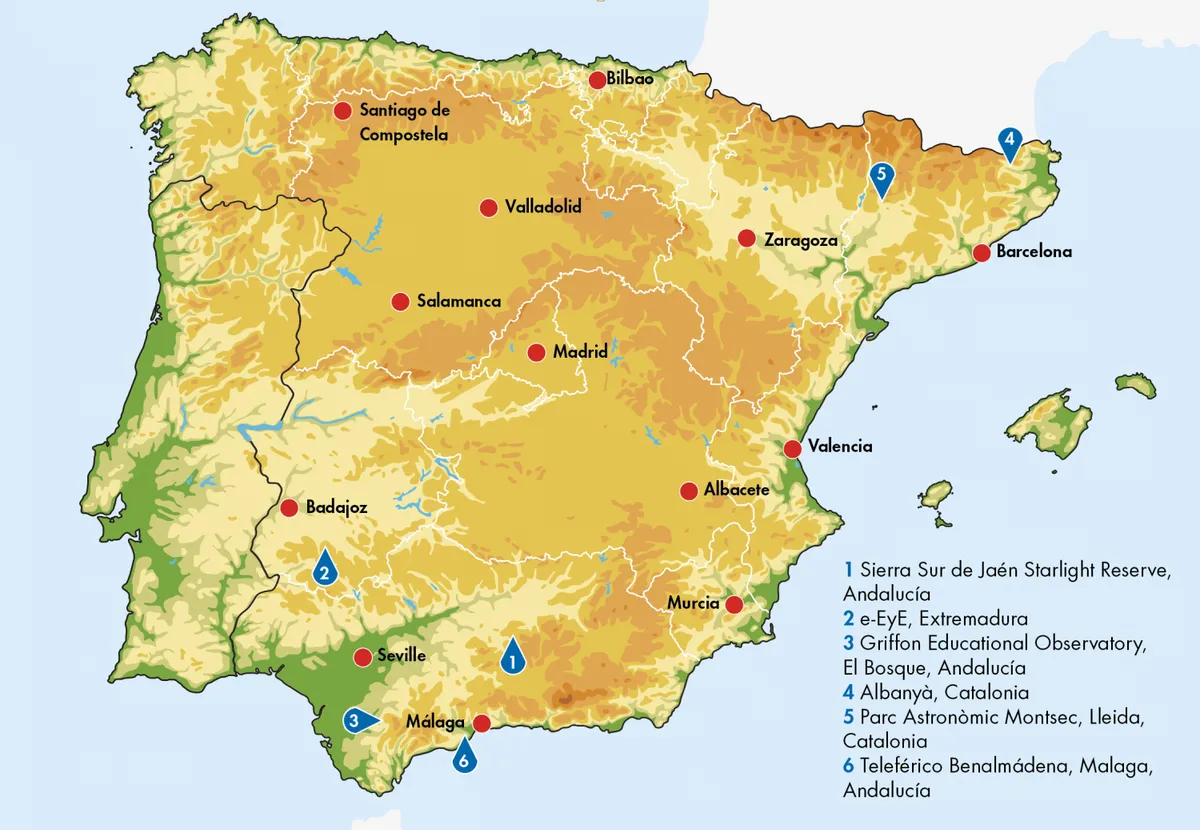
Not only does Sagittarius contain the Galactic core, but it’s also home to some fabulous deep-sky objects including the Lagoon Nebula (M8), Omega Nebula (M17) and the Trifid Nebula (M20), to name but a few.
Most of the places featured here are in protected areas that boast natural darkness, some of them certified as Starlight Reserves, Starlight Tourism Destinations and Starlight Hotels by the Starlight Foundation.
If you've mostly known Spain for its party islands like Ibiza, perhaps for your next holiday you should look into exploring the countries best dark-sky sites instead.
With clearer views of some of the night sky’s most beautiful objects, plenty of rural areas free from light pollution and an ever-increasing, well-organised network of Starlight Reserves and stargazing-friendly accommodation, Spain is worth an entry on every stargazer’s bucket list.
Sierra Sur de Jaén Starlight Reserve, Andalucía
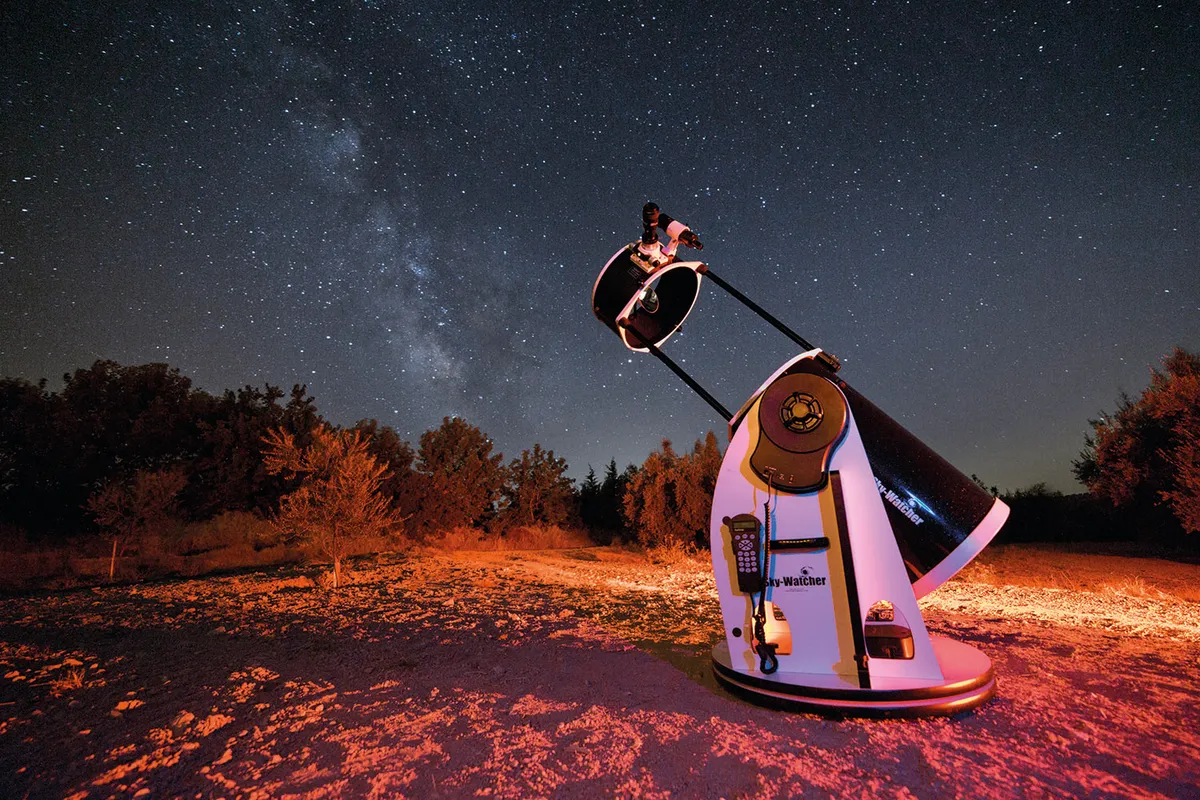
If you’re in Andalucía to see the Alhambra in Granada or the Mezquita in Cordoba, consider driving for an hour to the fringes of the Sierra Sur de Jaén Starlight Reserve.
A sparsely-populated rural area, it boasts over 300 clear nights a year and is home to the Observatorio Andaluz de Astronomía at La Pedriza, which runs occasional night-sky observation events and workshops.
For a more organised astro tourism experience, head to Casa Olea Starlight Hotel.
This 6-room boutique B&B on the fringes of Sierra Sur de Jaén has night-sky-friendly lighting and holds regular stargazing weekends, the next one being a three-hour, New Year’s Eve stargazing and tapas event, hosted by local astro tourism company AstroAndalus.
More info: www.casaolea.com
e-EyE, Extremadura
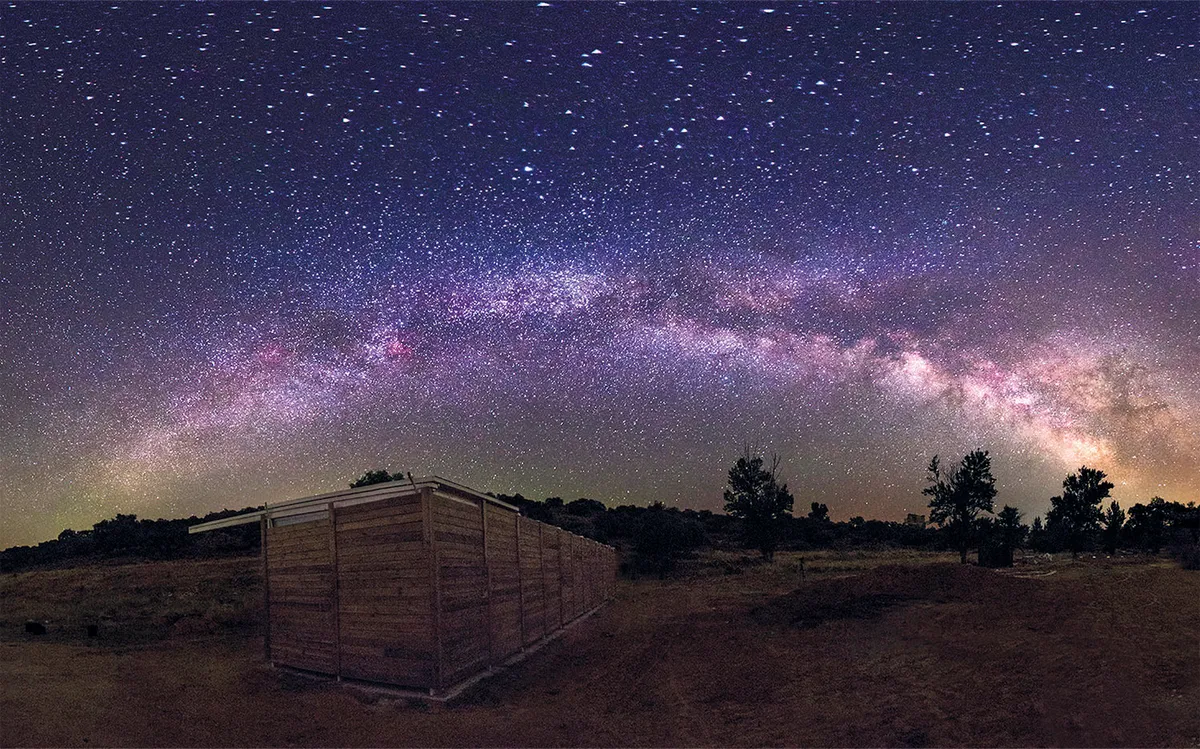
About 140km north-west of Seville in Extremadura near the Portuguese border with Spain is e-EyE, a great place for stargazing.
This is a comprehensive astro tourism complex ideal for amateur astronomers after clear-sky observations.e-EyE stands for Entre Encinas y Estrellas, which translates as ‘between oaks and stars’.
Certified a Starlight Reserve in 2016 and with a typical sky quality meter reading of 21.5 to 22, e-EyE has 250 clear nights a year, which visitors can enjoy by renting a section in a state-of-the-art observatory shed.
Each section has an independent roof, fibre optic internet access and Wi-Fi, and there’s a team of technicians on hand. You can even leave your own telescope here and control it remotely from anywhere in the world.
Events are held around meteor showers and the complex also organises star parties.
More info: www.entreencinasyestrellas.es
Griffon Educational Observatory, El Bosque, Andalucía
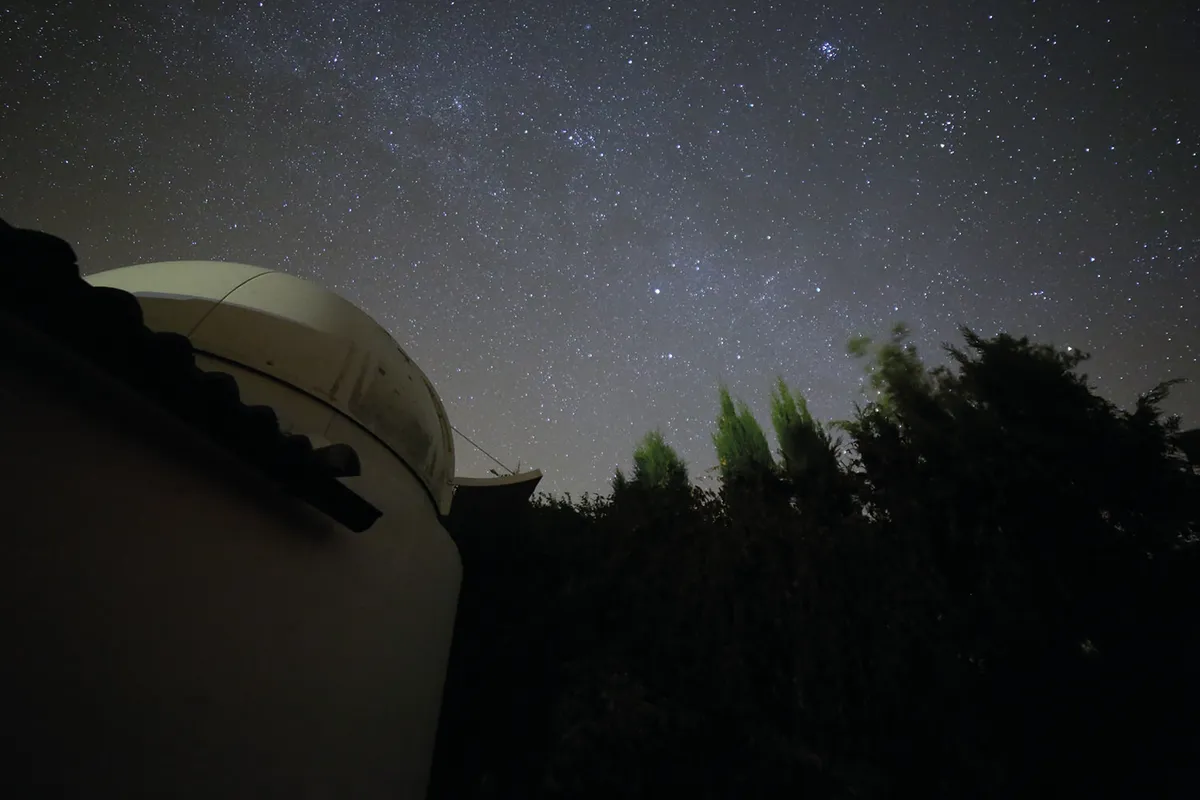
The star attraction of Griffon Educational Observatory, El Bosque, Andalucía is a domed 6-inch iStar refractor, though there’s also the chance to use Dobsonians, Tele Vue refractors, astrographs and Sky-Watcher EQ6 and EQ8 mounts.
Try your hand at wide-field imaging in the surrounding Sierra de Grazalema Natural Park, notably from the Puerto del Boyar mountain pass.
More info: Griffon Educational Observatory Facebook page
Albanyà, Catalonia
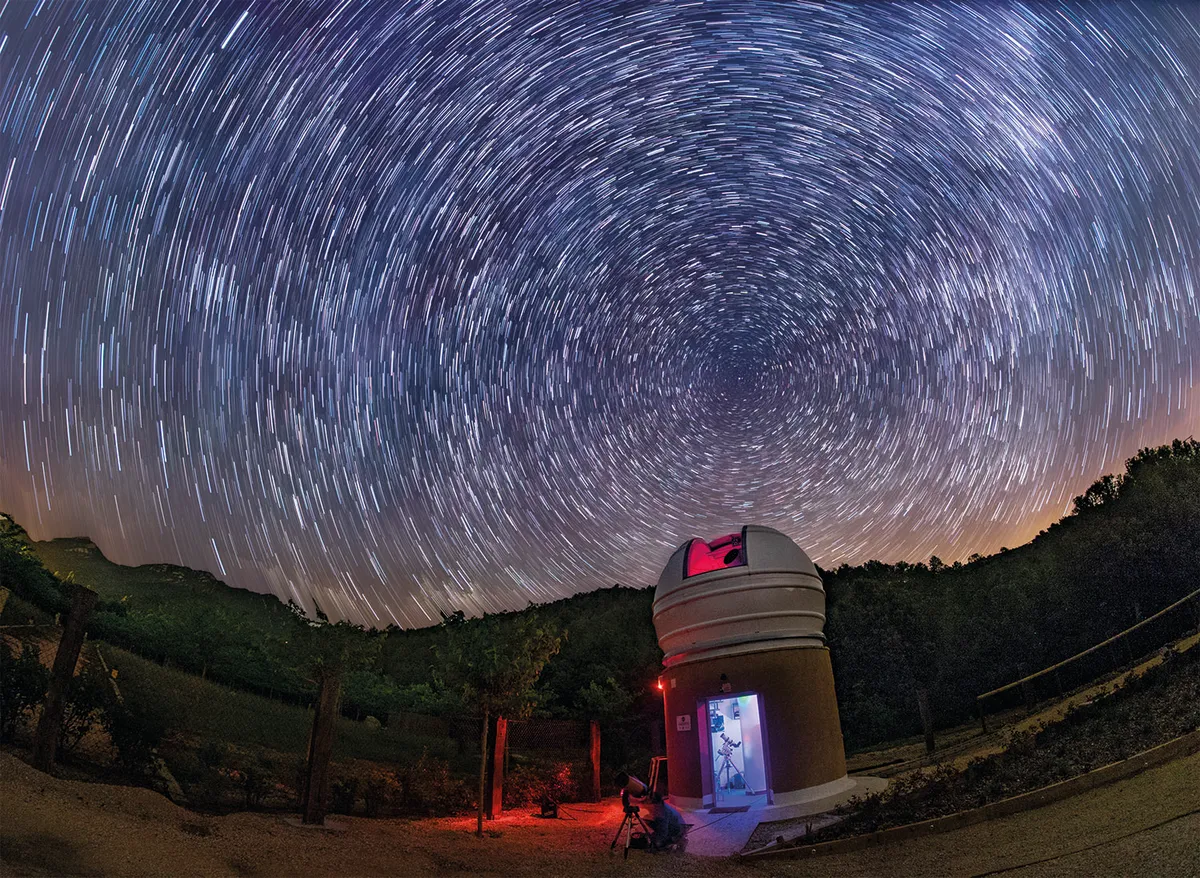
Here’s a great location for a summer astro camp. About 85km north of Girona in Catalonia (and not 30 minutes from the beaches of Costa Brava) in the north-east corner of Spain near the French border is the rural village of Albanyà with the Albanyà Astronomical Observatory nearby.
It became the first International Dark Sky Park in Spain in 2017, making it officially a stargazing mecca, though a campsite adjacent to the observatory, Bassegoda Park (which also has bungalow accommodation), is itself a Starlight Reserve.
The observatory welcomes visitors and holds regular stargazing sessions.
However, its astronomers also collaborate on serious research into asteroids and exoplanets. The observatory is closed in January and most of February.
More info: www.observatorialbanya.com
Parc Astronòmic Montsec, Lleida, Catalonia

Much further inland than Albanyà, but also in Catalonia, is this certified Starlight Reserve and Starlight Tourism Destination in the Montsec mountains.
Sheltered from coastal cloud and from the snows of the high Pyrenees, clear skies are common above Parc Astronòmic’s two facilities.
The Observatori Astronòmic del Montsec, on a mountaintop, is managed by the Catalan Space Institute and focused on research (so not open to the public), while the Centre d’Observació de l’Univers (COU) is in the valley and hosts an exhibition and planetarium show, and also conducts guided tours of its Parc de Telescopis.
There’s no accommodation here: visitors are asked to stay in the villages of the surrounding Montsec mountain range.
More info www.parcastronomic.cat
Teleférico Benalmádena, Málaga, Andalucía

Just as Albanyà is an easy astro excursion during a family holiday on the Costa Brava, Mount Calamorro is a must-visit destination for stargazing in Spain if you happen to be staying on the Costa del Sol, and the Teleférico Benalmádena cable car offers a fantastic way of getting there.
Amateur astronomers from the Málaga Society of Astronomy set up telescopes on the peak of Mount Calamorro, just south of Torremolinos, from 10pm every night each year during July and August.
The view from on high overlooks the Mediterranean. Special events are also held, most notably for the Perseid meteor shower.
More info: www.telefericobenalmadena.com

Stargazing and clear skies in Spain
Although the southerly latitudes and clear skies of much of Spain make it an attractive location for amateur astronomers, don’t assume that the entire country is ripe for stargazing – it definitely is not. From a weather perspective it’s best to avoid northwest Spain.
The regions of Galicia, Cantabria and the Basque Country in the north of the country are subject to an Atlantic weather system that is not kind to stargazers.
In the northeast, the Pyrenees mountains that divide France and Spain act as a natural barrier against clouds and light pollution from cities.
The rest of Spain has a Mediterranean climate and enjoys many nights of clear skies throughout the year.
Summers and winters are dry, with most of the rain falling during autumn and spring.
This article originally appeared in the December 2018 issue of BBC Sky at Night Magazine.
